
A good start is often believed to be half of the success in any undertaking, followed by proper planning and project management. However, a the discovery phase in software development is even more important than a good start, since it forms an excellent base for it. A discovery phase of a software project is aimed to make sure that the idea is feasible, and the product is competitive. It also helps to figure out the ways to market it and make it highly demanded by end-users, also forming a clear vision to success.
McKinsey’s research states that 17% of IT projects fail because of the collapse of the company, about 45% exceed the planned budget, 56% bring less benefit than it was initially estimated, and around 7% are delivered later than planned. The reasons for it may be multifaceted: lack of resources, highly competitive environment, wrong or inexperienced software developers, lack of data, and its analysis, and so on.
A careful and profound discovery phase of a project is a good chance for business owners to get into 10% of projects that succeed.
That’s why it’s unreasonable to start a software development project without a preliminary comprehensive analysis nowadays. The software development discovery phase should become the initial stage of any project you deal with.
Let’s look at the process of the discovery phase service of IT project and its deliverables in more detail.
What is a Discovery Phase or Scoping Phase?
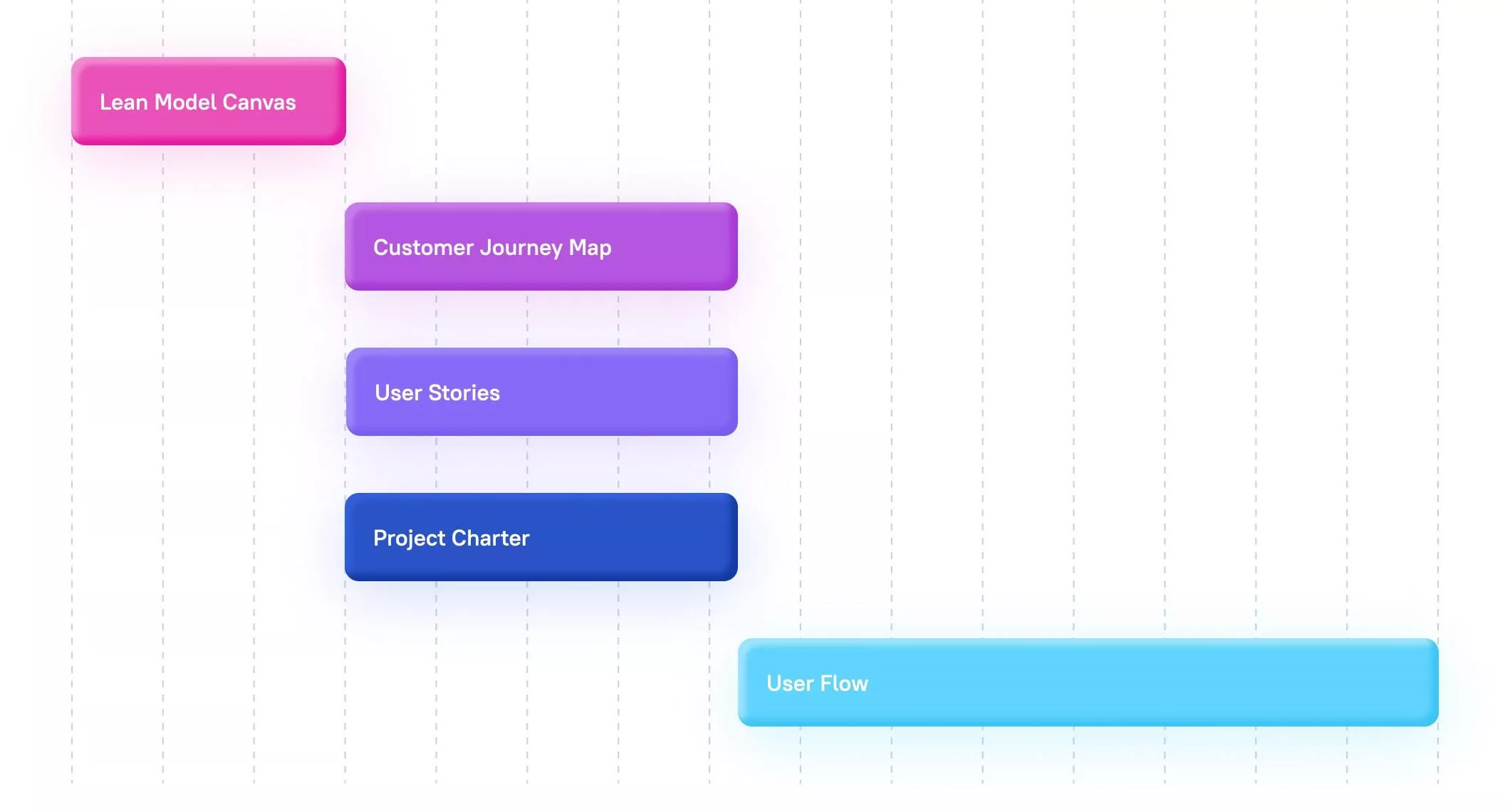
So, what is a discovery phase in software development? It’s an information-gathering procedure, which brings you an in-depth comprehension of the industry, the client’s business, and the target audience. It’s important to gain a profound understanding of the stakeholders’ expectations of the product and the end-users’ expectations. The main aim of the preliminary analysis is to provide a quotation to the customer. For this purpose, you have to gather the maximum possible details about the client’s needs and put it in a separate document.
It is essential to differentiate the scoping phase from the planning phase, which occurs afterward. The scope definition phase lays the foundation for the project and prepares the groundwork for the detailed planning phase. Once the scoping phase concludes, the project manager can proceed with the planning phase, focusing on creating a comprehensive project plan.
All the details found out in the course of the discovery help you to scope and plan your project and benefit to the delivery of the state-of-art custom software product to your client. To deliver really cutting-edge products do not underestimate the discovery phase!
What do we need the analysis for?
- To find out the motives, the aims, and the problems of the users.
- To comprehend the context of product usage.
- To find new ideas for product development and new insights.
- To understand what are the users’ expectations and attitude to the product.
How long should the discovery be?
- For mid-sized projects — 2-3 weeks.
- For large projects — 4-6 weeks.
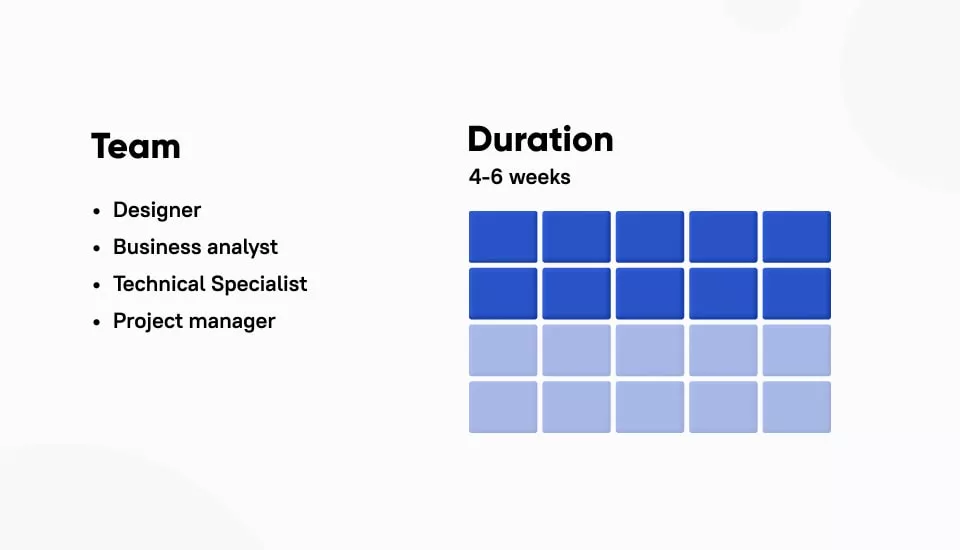
When do You Need a Discovery Phase?
The very first talk with a client can already give a discovery team an answer if the idea needs discovery. Without any doubt, startups should take it for granted that the project discovery phase is a must.
Innovative projects that have extremely changing requirements or those subject to the latest trends are also highly recommended to implement a discovery phase for software development.
The other project types that should not neglect this initial stage are:
- The projects with unclear functional requirements.
- The ones with vague non-functional requirements.
- Those projects, which require a Proof of Concept (POC).
A discovery phase of an IT project where you have only a general understanding of the features a future solution needs will give you a vision of your product from a user perspective.
In case you do not know what technology stack and tools to use, the software development discovery phase may help you involve the trial-and-error method to find and test the correct approach and technology.
If the vision of your idea is vague, the discovery phase of a software project helps validate your concept's feasibility and commercial viability through prototyping.
Want a web app that does more?
Let's build a solution that's smart, sleek, and powerful.
Alina
Client Manager

Sometimes, when a business analyst or a software development expert consults you as to what tools to apply and how to most effectively study your customers, you may consider skipping this stage. However, missing the discovery phase you should be ready to face the far-reaching harmful consequences.
The question of what is discovery phase in projects is now more or less clear, let’s now check the procedures required and the deliverables.
Why Do You Need Business Analysis in the Initiation Stage?
You may wonder how business analysis is used in project management. Business analysis is pivotal in project implementation, encompassing development and testing phases. During development, it involves modeling internal business processes and data flow, identifying critical system performance components, and crafting comprehensive test plans.
So when should business analysis be carried out in a project? During the Project Initiation stage, the Project Manager collaborates with the Business Analyst to initiate discussions and reach a consensus on the project's scope and definition of the business need. They also identify and agree upon the expected project outcomes, benefits, and project acceptance criteria.
The discovery phase is a crucial planning stage that takes place during the initiation stage in project management. During this phase, team members collect essential information about the project, establish the budget, and define precise project boundaries. The primary objective of the scoping phase is to make well-informed decisions based on data and insights, ultimately reducing all risks associated with product development.
What Do We Do During the Discovery Phase?
During the Discovery phase, we create a series of documents and schemes for the future effective work on the project.
1. Lean Model Canvas
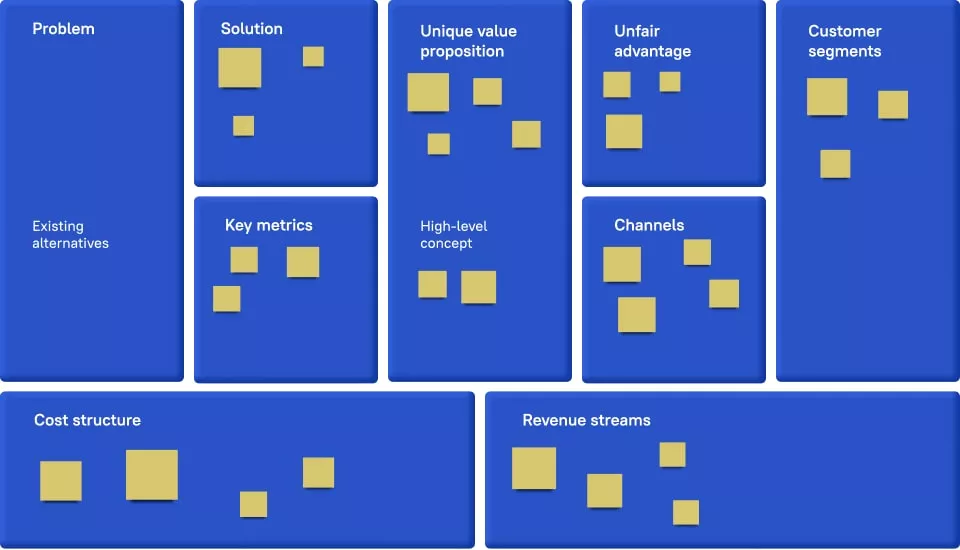
Firstly, a conceptual description of the future product business model for MVP is created in the form of a diagram describing all business processes related to the product: proposal, infrastructure, consumers and financial aspect.
2. Customer Journey Map
In addition, a «map» of customer communication with the product is created. This is a visual scheme of the user interaction with the product, which includes all the proposed points and channels of such interaction, as well as the client’s visualized experience, with his thoughts, emotions, goals, motives, fears on the way to achieving the result taken into consideration.
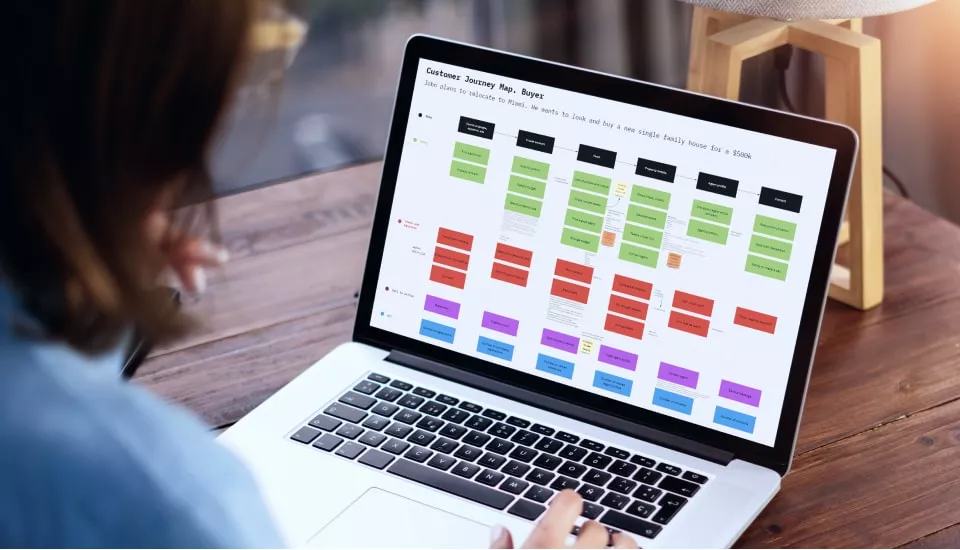
3. User Flow
To determine how the user will interact with the interface of the new product, User Flow is created in the form of schematic screens of the software solution and transitions between them. Thus, the user behavior scenarios are projected through the visual interface prototypes.
4. User Stories
A brief description of how the system will be used describes functional requirements for the system and its acceptance criteria. User Stories allow the customer to effectively prioritize the implementation of product functionality.
5. Product Vision
This document, describing the general objectives of the project and the proposed solution, allows a better understanding of the product creating goals, potential, and prospects. Product Vision is useful to all the parties involved in the development — developers, staff, marketing department, etc.
6. Non-functional requirements
Our team also issues recommendations regarding the properties of the system or limitations that are not related to the behavior of the system — the optimal technology stack, infrastructure architecture, and expected load.
What are the Main Benefits of a Discovery Phase?
The benefits of the preliminary analysis and research are in fact multiple.
The benefits of the discovery phase in software projects are numerous and often underestimated, especially in early-stage development or startup environments. Quite often we face the StartUps, which have an idea but do not have a deep understanding of what the project should be like and which component parts it should contain. It’s not rare that the customer experiences difficulties to understand what the future users need. Besides, due to the lack of technical background, the clients often fail to make a comprehensive list of the required software elements.
We always propose software product discovery services to our clients. The research is conducted by our business analyst, designer, and CTO. They communicate to the customer, find out the requirements and analyze the market. Later on, they make the project description.
Such an approach minimizes the number of alterations in the development process because the scope of the project is defined along with the other key factors such as the type of solutions, features, and functionalities required, best platforms to be used, timeframes to fit in and costs to match.
By identifying all the details in advance, the client gains a number of benefits. The main of them are:
- Honing of the idea and the essence of the project, based on real analysis.
- Finding out certain project aspects, which have not been taken into consideration initially.
- Customers’ expectations and problems comprehension, based on the competitors’ products research.
- The opportunity to get an expert evaluation of the project and the ways it can be brought to life as well as an additional insight into the alternative solutions and technologies offered by the contractor.
- Creating a clear list of user story for the project.
- Avoiding the need of making costly changes during the development process.
- Achieving the balance between the business goals of a client and the needs and wants of the users.
- Getting the possibility to understand if the contractor is a good fit for the client’s expectations, how comfortable the interaction between them is and the opportunity to make the final decision as to future cooperation.
We always perform the expert evaluation of how the project fits into the client’s present infrastructure and operational processes and recommend changes, improvements or updates if they are necessary.
As soon as we understand the project background we try to find and suggest our client’s alternative solutions, which the customer might not even realize are possible because he is not a digital expert. We often find better or cheaper solutions than initially planned by the client.
An additional bonus, which our client may receive as a result of the discovery phase, is the clear project quotation, with the scope and plan of works required and proper cost estimation. With such a document he can turn to the potential investors and get funding easier.
Our Experience
As you know, Stfalcon has extensive experience in multifaceted spheres, so we often get requests to realize just a discovery phase for our client to take the further decision as to his product.
Some projects to mention are a Discovery Phase for a Real Estate Company, a client came with an idea to create an approachable management solution for small property owners and real estate agents that will also provide a possibility for the tenants to order and pay for services in a simple and convenient way.
Stfalcon team had to work with 3 major roles: a property owner or agent, an existing client (tenant), and a potential client (a new visitor).
Our real estate software development team worked out all the product features, as a result, the client got a complex solution for both the MVP and the 2 release versions of the future product, including web and mobile apps. We created detailed prototypes, user stories, product vision, and a budget plan.
Another case was a Discovery phase for a logistic company. Our clients were enthusiastic brothers travelers, who came up to Stfalcon with the unfinished idea of creating a platform where anyone can transport anything in just a few simple clicks.
A Discovery phase was needed to collect and analyze all the details about the project, potential market, and customers. Stfalcon got a well-rounded and in-depth understanding of the goals, scope, and limitations of the project. We used the online visual collaboration platform — Miro to communicate with our client at all stages.
Stfalcon collected and analyzed the comprehensive data about the project and provided the client with a product vision document; user stories separated into MVP and Release 2; estimated budget, and timelines for MVP and Release 2.
Conclusion
Guess we’ve given a comprehensive answer to «What is a discovery phase?». It’s quite clear now that through discovery, we lay the ground for great project experience, and provide valuable software solutions customized to our clients’ needs. However, the real discovery phase meaning and value is that it moves us beyond the limits of technical specifications, but provides context for project implementation from scratch, reveals possible challenges and bottlenecks and encourages creativity for both project managers and development team.
If you are ready to start a project or scale your business, contact us to discuss it. We can also discuss the questions which you might still have, just reach out.

 Read the full case study
Read the full case study
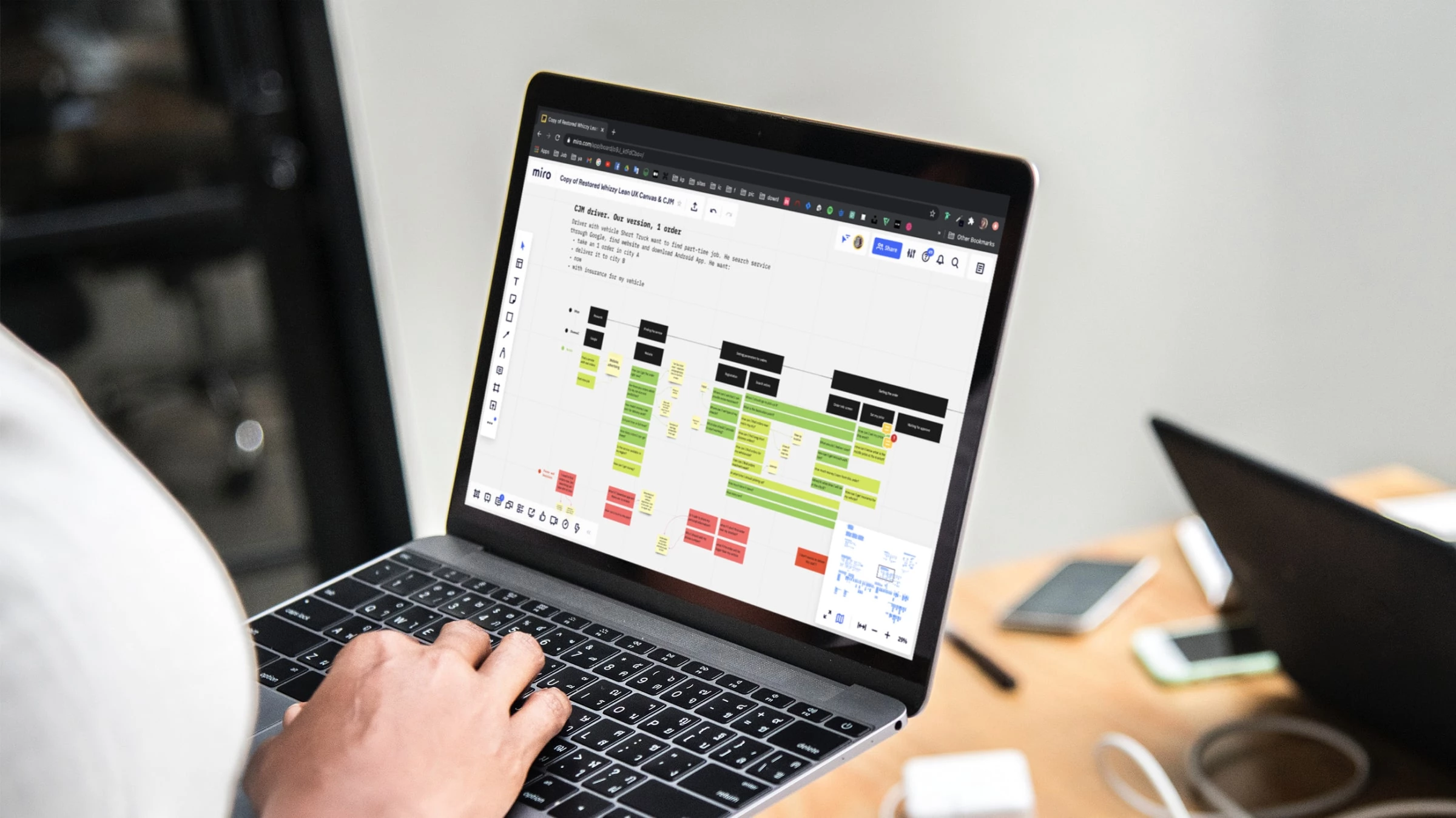 Read the full case study
Read the full case study

